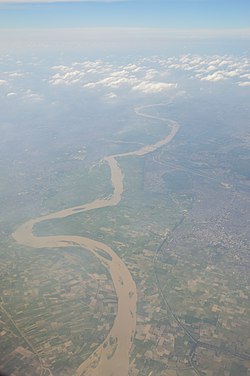Background
Etymology
Hindon comes from its ancient name Harnadi. [1]
History
An Indus Valley civilization (fl. 3300–1300 BCE) site, Alamgirpur is located along the Hindon River, 28 kilometres (17 mi) from Delhi. [2]
During 1857–58, Ghaziabad city was a scene of fighting during the Indian Mutiny, when Indian soldiers in the Bengal Army that were under the British East India Company mutinied but soon turned into a widespread uprising against British rule in India. The Hindon River, in particular, was the site of several skirmishes between Indian troops and British soldiers in 1857 including the Battle of Badli-ki-Serai and today, the graves of the British soldiers and officers can still be seen. Ghaziabad's place in Northern Indian history is assured by the birth of many freedom fighters who played a role in various revolutions all dedicated to the attainment of freedom for all who have lived – and are still living – there.
Mythology
Near Sardhana lies the ancient Mahadev Temple that is believed to be dating from the Mahabharata period, and where the Pandavas prayed before leaving for the Lakshagrih, the notorious palace made of lac by Duryodhana, at the confluence of the Hindon (previously known as Harnandi) and Krishna rivers (Kali River, Kali Nadi) at Varnavrat, the present Barnava, and where the prince resided with their mother Kunti. [1]
This page is based on this
Wikipedia article Text is available under the
CC BY-SA 4.0 license; additional terms may apply.
Images, videos and audio are available under their respective licenses.

